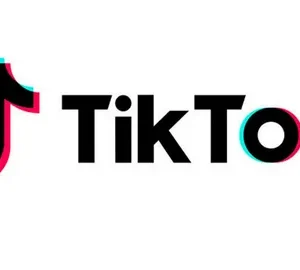We live in an era where technology evolves fast. Gadgets that seemed futuristic a few years ago are now mainstream. With smart homes, voice assistants, IoT, and energy-efficient appliances, the question many are asking in 2025 is: Is it really worth investing in smart Electronic Items? The short answer: in many cases, yes — but it depends on your needs, budget, and long-term priorities. Let’s explore the pros, cons, and what to look for so you can decide whether smart electronics are a smart investment for you. This insight comes with the usual care from GadgetsAman.
What Makes “Smart” Items Different
Smart Electronic Items go beyond simply turning on or off. They adapt, learn, connect, automate, and optimize. Examples include the following:
- Smart thermostats that learn your schedule, adjust heating/cooling, reduce waste and save energy.
- Security systems with AI-driven surveillance and alerts.
- Wearable health monitors, IoT-enabled appliances, and voice assistants that orchestrate your smart devices from one hub.
These features add convenience, but also complexity and initial cost. So whether it’s worth investing depends on how you value the trade-offs.
Key Benefits of Smart Electronic Items
- Energy savings and cost reduction
Smart devices like thermostats, lighting systems, and plugs actively optimize energy use. According to McKinsey, smart energy control applications could reduce electricity bills by around 20% by preventing unnecessary usage. Over time, those savings can offset the extra cost of the device. - Convenience & Time Savings
Automated routines (lights, climate, security), remote control through mobile apps, and voice-commands all free up small bits of time and mental energy. While each action saved may feel minor, cumulatively they matter. - Improved Security, Health, and Safety
Smart cameras, sensors, and monitoring devices help with safety (intruder detection, fire/water leak alerts) and health (air quality sensors, wearables that monitor vitals). These give better control and peace of mind. - Increased Property Value & Resale Appeal
Homes with smart automation systems tend to be more attractive. In markets like India, properties equipped with such systems often command higher resale or rental values. - Sustainability & Ecology
With growing awareness of environmental impact, smart Electronic Items designed for low power consumption, recycling, and resource efficiency are appealing. Also, smart grids and energy-management systems have economic value as well as environmental benefits.
The Costs and Drawbacks to Consider
While there are many upsides, some challenges or drawbacks mean smart electronics aren’t always the best choice for everyone.
- Higher Upfront Cost
Smart versions of devices cost more initially — because of sensors, connectivity, AI or data-driven features. If your budget is tight, the payback period may be longer. - Complexity & Learning Curve
Setting up smart ecosystems, ensuring compatibility (devices from different brands), firmware updates, network stability — these can be barriers. Also, security and privacy are real concerns. More connected devices mean more potential vulnerabilities. - Obsolescence & Software Support
Smart devices rely on software. Over time, support (firmware updates, security patches) may drop. If the manufacturer stops support, the device may degrade in functionality or become insecure. - Hidden Costs
Cloud service fees, data usage (for IoT devices), power consumption in standby, or subscription charges for advanced features may add ongoing costs.
When Investing Makes Sense
Here are some situations where investing in smart Electronic Items is likely to pay off:
- Frequent energy bill payers: If you live in a place with high electricity costs, smart energy devices will give real savings.
- Health & safety priorities: If security or health monitoring is important (children, elderly, environment), then the features provide real value.
- Tech enthusiasts or early adopters: If you like having the latest, are comfortable navigating tech setups, you may find the benefits more satisfying.
- Homes or properties for resale or rent: Smart features can differentiate your space in the market and attract tenants or buyers.
Judging the Return on Investment (ROI)
To assess whether investing in smart Electronic Items is worthwhile, consider:
- Payback Period: How long until savings (energy, repairs, convenience) offset the extra cost?
- Usage Frequency: A smart device used every day yields more benefit than something used rarely.
- Lifespan & Support: Check how long the manufacturer promises updates and how stable the ecosystem is.
- Compatibility & Expansion: If you plan to expand your smart system (more devices, rooms), choose devices and brands that integrate well.
What’s Hot in 2025
Some trends making smart electronics more attractive now:
- AI-Integrated Systems that adapt to behavior (learn when you sleep, when you’re out, etc.).
- 5G & IoT enabling faster, reliable connectivity and allowing devices to talk with each other seamlessly.
- Affordability rising: Brands are offering lower-cost smart plugs, lights, security devices, making the entry barrier lower.
- Sustainability becoming a selling point: energy savings, green materials, reducing e-waste.
Conclusion
So, is it worth investing in smart Electronic Items this year? For many people: yes. The returns in convenience, security, energy cost savings, and long-term home value make the investment compelling—especially as technology becomes more affordable and smarter. But it isn’t a one-size-fits-all answer. You should assess your priorities, budget, and how much you’ll use the smart features.
If you prefer guidance tailored to your exact needs—region, product types, and budget—GadgetsAman can help you examine models, features, and whether a purchase is smart or just trendy. After all, investing is only worthwhile when you get use, satisfaction, and value in return.






